Art & Design
OPENING STATEMENT – WELCOME
Welcome to the new ART AND DESIGN Department Website Page!
Ever wondered how Art & Design contributes to our world? Just look around you and you will see it is an integral part of our daily lives; whether it’s the advert that inspires us to watch a film, the chair we sit in for comfort but equally looks stylish, the wallpaper we choose to complement our decor, the shoes we wear for a special occasion, the town we live in or visit to the packaged product we decided to purchase because of the quirky graphics! Everything in our world has been created, designed, invented to improve our daily lives and in most cases, there’s a Creative person behind it all!
Ethos and Aims
- Establish a creative atmosphere in which staff and students can work in a relaxed, imaginative and energetic way.
- Stimulate visual awareness in pupils by challenging, extending and intensifying their aesthetic experience in nature and the man-made environment. It is hoped that this can be achieved through the unique contribution of the individual. Lessons in Art can then be a channel for every pupil to express their own individual sensibility, sensitivity, intuition, feelings and emotions.
- Encourage independent study. investigation and extensive research on the student’s own initiative.
- Develop an appreciation of the richness and variety of our culture. The curriculum in Art should develop an appreciation of the richness and variety of our Culture and other Cultures and of the spiritual and moral dimensions of life.
- Encourage critical awareness. Critical analysis of the work of artists, designers and crafts people should be taught and encouraged together with critical awareness of the pupils’ own work.
- Many pupils experience enjoyment and fulfilment in Art and also pursue these subjects beyond school and find careers in them. Access to employment in the Creative Industries is usually through a progressive, broad and exploratory Art and Design education in school.
STAFF LIST
Miss Holly Russell - PTC Creative Arts
Miss Morris
Mrs Macdonald
Mrs Bishop
Mx Wiseman
Mrs Young
COURSE OUTLINE –
Broad General Education S1-3
The first three years of secondary school Art and Design education are critical in the development of not only the young artist or designer but to all children who, through transferable skills will develop a range of skills that include
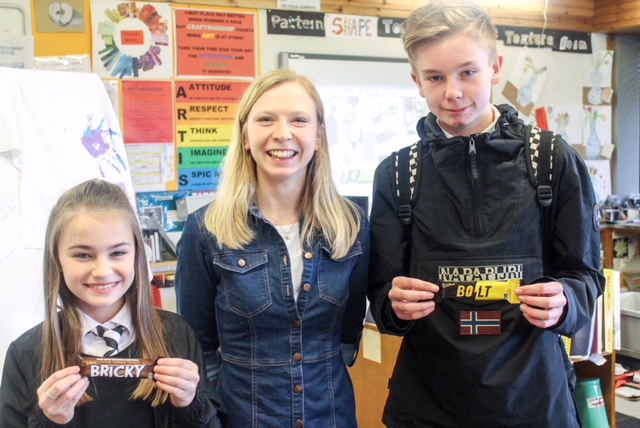
- Hand-Eye coordination/Dexterity

- Aesthetic awareness
- Appreciation for the world around them
- Appreciation for the world of work, skills for life
- Problem Solving
- Innovation
- Creative Thinking
- Critical Thinking
- Communication – listening, talking, collaborating, negotiating, etc
This is a time to capture their imagination, to encourage, motivate and inspire them to continue with their interest and understanding of Art and Design in the future.
The BGE course will allow pupils to:
- investigate visually through drawing and painting
- explore a range of materials
- use the visual elements of line, tone, texture, colour, shape, pattern, form and composition
- create and design in 2 and 3 dimensions and communicate solutions
- evaluate their own work and work of fellow pupils
- appreciate the work of artists and craftspeople
During the first three years (BGE) at IHS School all pupils will receive 53 minutes of Art and Design teaching time
Twice per week in S1
Once per week in S2
Three times per week in S3
The 3 outcomes of Art and Design are:
- Expressive - creating
- Design - Developing
- Evaluating and appreciating - Developing capacity to evaluate my own and other’s work
The Design element introduces the pupil to the Design Process and to both two and three dimensional design techniques. The first three years should provide the foundations of an understanding of the Visual Elements which underpin the practise of both Fine Art and Design. In fact, this understanding commences at Primary level, following an Art transition series of lessons. All pupils will develop their appreciation of Art and Design through practical and theoretical studies.
By the end of the three-year pre-specialist Art and Design course we aim to have given our pupils a really wonderful insight into the world of Art and Design, given them an opportunity to experience a wide range of media and techniques and to have increased their knowledge and skills set to a point where they have an understanding and awareness of the world around them, preparing them for life and work.
COURSE OUTLINE
National 4
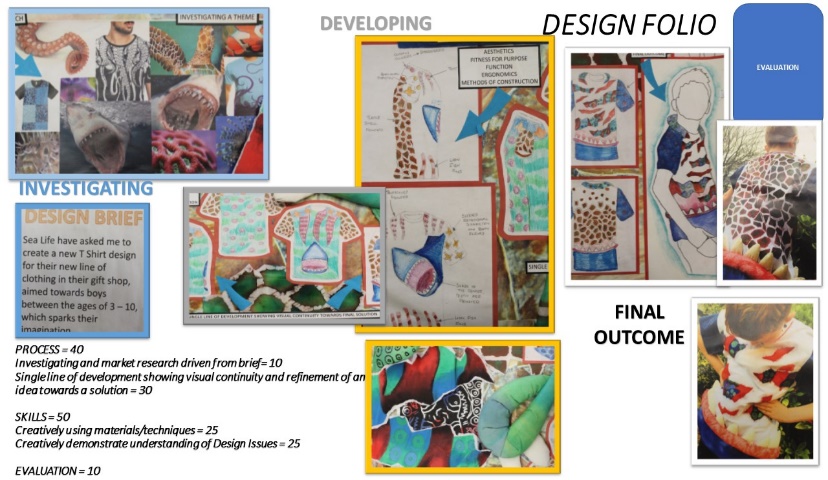
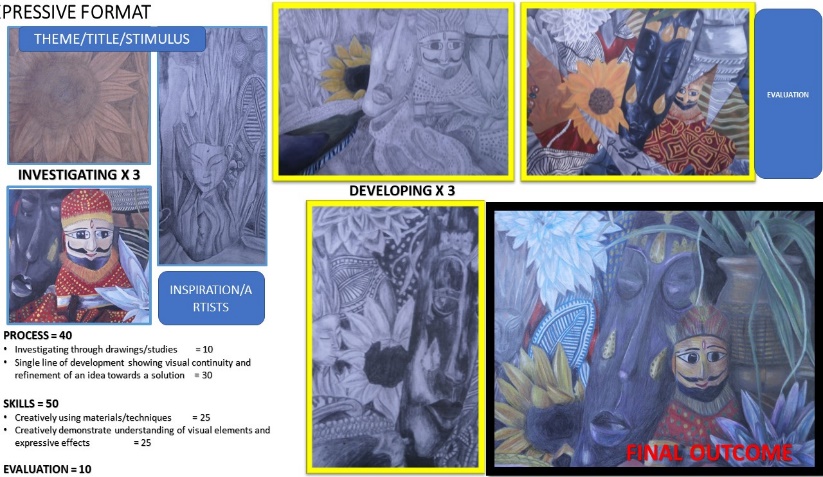
Conditions of award
To achieve the National 4 Art and Design Course, learners must pass both of the required Units throughout the year.
For practical folio information, follow National 4 advice below.
There will be written tasks to carry out, investigating the work of two designers and 2 artists. This will be marked internally by the teacher. There is no end of year exam.
Progression
This course may provide pupils with opportunities to progress to:
- National 5 Art and Design
- Scottish Vocational Qualifications in Arts
- Further education, training and employment
COURSE OUTLINES:
National 5 & Higher
Section 1: Portfolio - 200 marks
This Portfolio is divided into two folios – EXPRESSIVE (100 marks) AND DESIGN (100 marks)
The purpose of the portfolio is to assess the candidate’s
- PROCESS = 40 total
Investigating through drawings/studies= 10
Single line of development showing visual continuity and refinement of an idea towards a solution = 30
- SKILLS = 50 total
Creatively using materials/techniques = 25
Creatively demonstrate understanding of visual elements and expressive effects= 25
- EVALUATION = 10 total


Section 2: Critical analysis question paper
- National 5 - 50 marks 1.30 hours - 50 marks
- Higher – 60 Marks 2 hrs – 60 marks
The question paper has a total mark allocation of 60 marks. This is 23% of the overall marks for the course assessment.
The question paper has two sections. Design 30 marks, Expressive 30 Marks
The question paper is completed under closed book exam conditions and will take place in the school. Pupils are not permitted to take in any notes or course materials.
Nat 5 Progression:
- Higher Art & Design, Scottish Vocational Qualifications in Creative arts, Further education, training and employment
HIGHER Progression:
- Advanced Higher Art & Design, Scottish Vocational Qualifications in Creative arts, Further education, training and employment
COURSE OUTLINE
Advanced Higher Art & Design
Purpose and aims of the Course
The portfolio has a total mark allocation of 100 marks.
This is 100% of the overall marks for the course assessment.
The portfolio assesses candidates’ ability to apply design skills and integrate them with their knowledge and understanding of design practice.
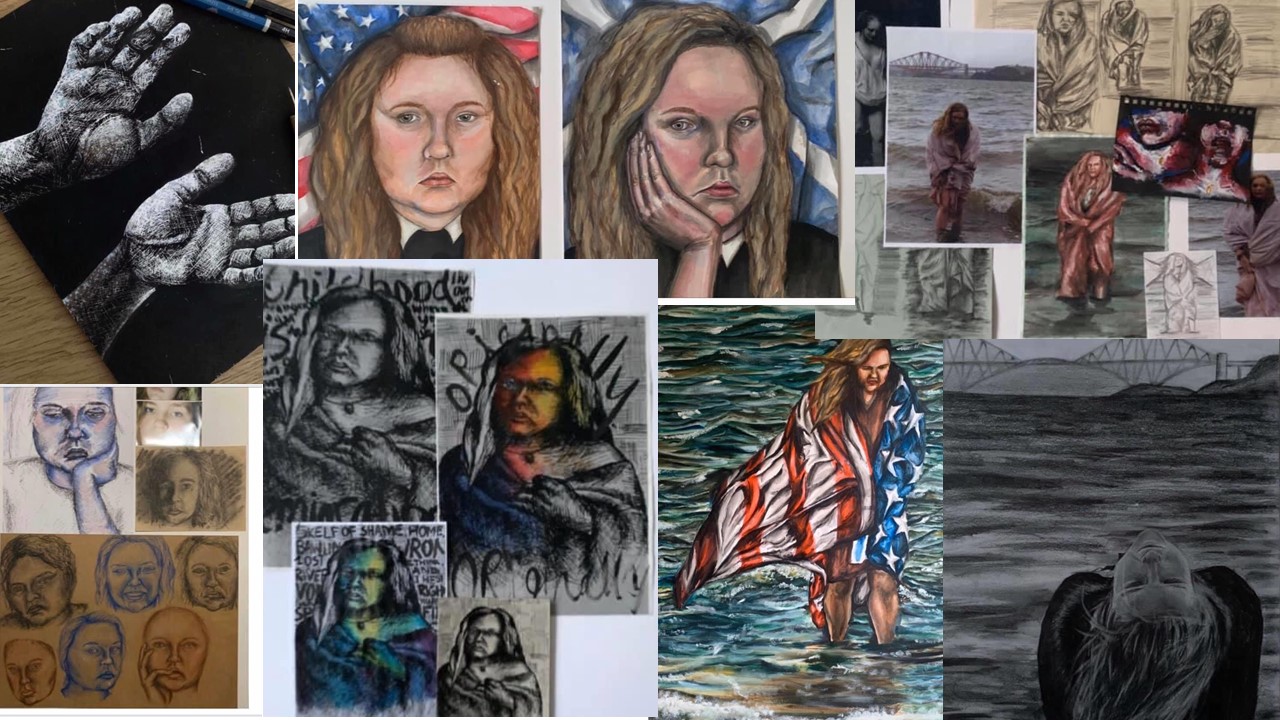
Throughout the portfolio, candidates have the opportunity to demonstrate skills, knowledge and understanding by:
- Section 1 — practical folio work 64 marks
- Section 2 — contextual analysis 30 marks Section 3 — evaluation 6 marks
Course Assessment Structure
Portfolio – 100 marks
Candidates can present their practical portfolio work in a variety of formats.
- The minimum is eight A1 single-sided sheets (or equivalent) and the maximum is 16 A1 single-sided sheets or equivalent. The portfolio must not be larger than A1 size when folded.
- Sketchbooks can be submitted as part of the overall allocation. For example, four A3 pages is equivalent to one A1 sheet, and eight A4 pages is equivalent to one A1 sheet. If only certain sketchbook pages are presented for assessment, these must be clearly bookmarked, for example using sticky notes. If candidates exceed the maximum allocation, a penalty is applied.
- Candidates’ work must be firmly attached to mounting sheets, which should be numbered in the order that they are to be viewed.
- All parts of the portfolio should show visual continuity.
- 3D work does not need to be submitted if good, clear photographs showing different views can be provided.
- Candidates do not need to provide the maximum amount of sheets in their portfolio. The scale of their work, their working methods and the way they present their work will influence the size and number of sheets they use.
Section 1 — practical folio work 64 marks
Section 2 — contextual analysis 30 marks
The contextual analysis allows candidates to demonstrate their knowledge and understanding of art practice and contexts that have an impact on an artwork.
By focusing the research around a single artwork, candidates can work from a very specific starting point. When choosing an artwork, candidates should consider these questions:
- Does the artwork have a clear connection to my practical work?
- How much information is available about the artwork?
- Does the artwork give me potential to discuss contexts? When selecting an artwork for the contextual analysis, candidates must consider how well the work relates to and informs their practical work. Candidates should explain the link between their practical work and their contextual analysis in the evaluation template provided by SQA. Candidates should not discuss their practical work in their contextual analysis Candidates can interpret the term ‘artwork’ in its broadest sense, which includes painting, printmaking, photography, sculpture, installation and site-specific art. An artwork is usually a single work, but it could be a series of works created to be viewed together.
Analysis of an artwork Candidates have to analyse the features of their chosen artwork.
These features may include:
- The title of the work
- The subject of the work
- The effect of visual elements such as colour, shape or line
- Repetition or contrasts of visual elements
- The format or scale
- The use of materials and techniques
- The artist’s or artists’ working methods
- How the form and content combine to create effects
- The artist’s treatment of the subject
- Statements about the work by commentators or critics
- The aims of the artist
Section 3 - evaluation 6 marks
Candidates should use problem-solving, planning and evaluation skills during the creative process. They should complete their evaluation as the final stage of their expressive artwork and they must use the evaluation template.
The evaluation assesses candidates’ ability to give justified personal opinions on the:
- Decisions they made when working through their expressive artwork
- Effectiveness of the visual qualities of their expressive artwork, with reference to their theme or stimulus
Progression
This course may provide pupils with opportunities to progress to:
- FE Higher education pathways.
- Scottish Vocational Qualifications in Creative arts.
- Further education, training and employment.
HOMEWORK POLICY
Aims:
To support pupil learning
Targeting age and ability
To develop knowledge and understanding
To develop individual awareness through evaluation
To develop progressive learning
Setting of Homework:
Homework will be set to support the work in progress by the pupil.
We will adhere to the School Homework Policy guidelines.
S1, S2, S3 pupils will be given set homework that is relevant to the projects set and will extend and consolidate their learning experience. This will enable the pupil to carry out practical and theoretical work.
S4 through to S6 will produce homework predominantly linking to their SQA coursework. It is expected that throughout the academic year homework based on units set will be implemented by the classroom teacher. Pupils at these stages will be required to work independently and adhere to assessment deadlines. It is primarily up to the individual to develop greater artistic awareness out with the art department. This is an essential requirement for a portfolio building exercise. Throughout the term the classroom teacher and Head of Department will monitor the progress of each pupil.
Timings:
Junior pupils in S1 – S3 will be given set homework and will be required to work on practical and/or theoretical work for a minimum of thirty minutes every week.
Senior pupils in S4 to S6 will develop project work in accordance with Whole school guidelines. Time allocated to homework will vary throughout the year but pupils will be expected to undertake homework assignments, both theoretical and practical regularly.
|
YEAR GROUP |
FREQUENCY |
EXAMPLES OF HOME TASKS |
TIME REQUIRED TO COMPLETE TASK |
|
S1 - BGE |
Fortnightly
|
Observation drawing of a natural object, using pencil and tone. Understanding visual elements line, tone, form |
15-30 Minutes |
|
S2 - BGE |
Fortnightly
|
Observation drawing of self portrait using pencil and tone. Understanding proportion, form, media handling skills |
15-30 Minutes |
|
S3 - BGE |
Fortnightly
|
Observation drawing of still life composition using pencil and tone. Understanding proportion, form, media handling skills and perspective |
15-30 Minutes |
|
National 4/5/ Higher (S4/5/6) |
Weekly |
Research study relating to the Design Brief/Expressive theme Critical analysis of art/design work, understanding how to discuss a piece of work using SQA vocabulary |
30 Minutes + |
POSITIVE DESTINATION PATHWAYS….into the Creative Industries. JOBS!
Studying Art & Design can enhance many skills for a variety of career paths. Many graduate employers seek to recruit people who are lateral thinkers and creative problem solvers. These qualities are natural to artists and designers and therefore make you an attractive asset, particularly to the expanding UK creative Industries sector. Arts students are highly sought-after by employers.
BUT….just because you want to study Art and Design doesn’t mean you HAVE to progress towards Creative Industry employment. We have many learners who wish to pursue a career within the Science, Engineering, Business industries and they bank a successful grade with us in order to help them do so! There are many transferable skills that are relevant, taught in art and design.
Many employers now actively seek those who have studied the arts. Steve Jobs, founder of Apple, was fond of saying his success was due to his hiring artists and musicians.
A financial and business services group declares that employees with arts degrees have developed more quickly in their roles from the start and has found them to have discipline, confidence and the ability to accept criticism.
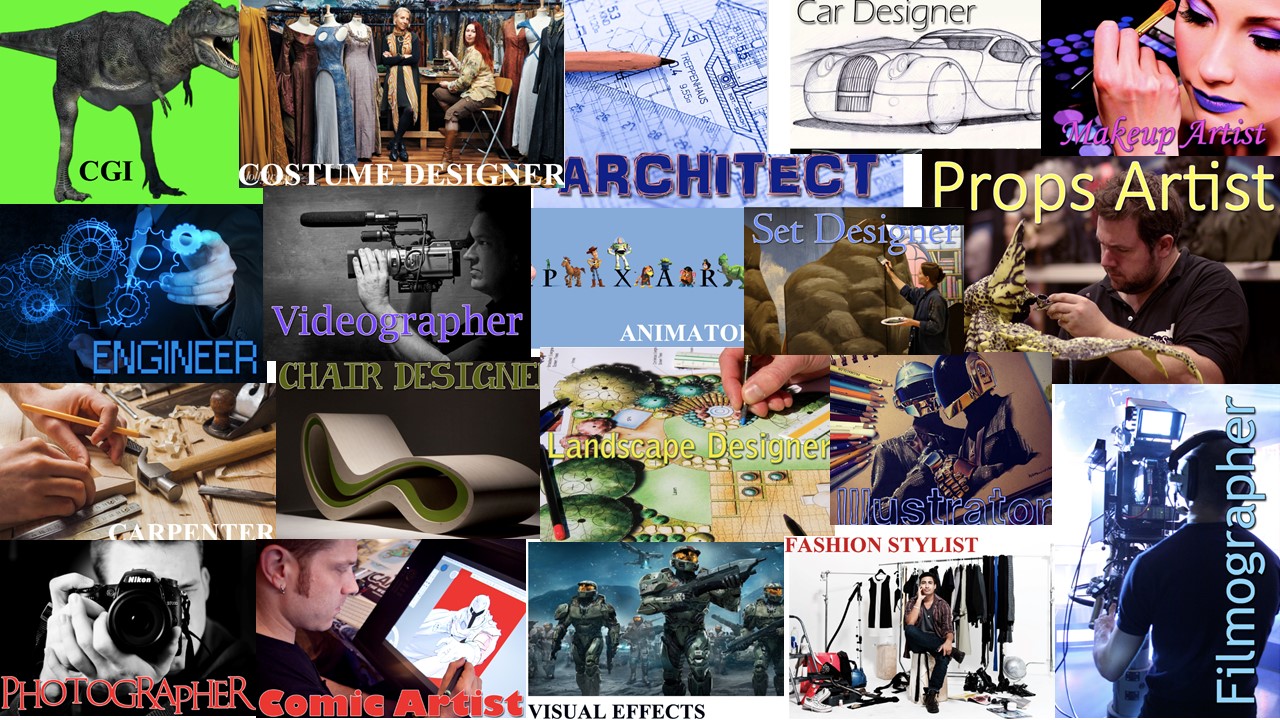
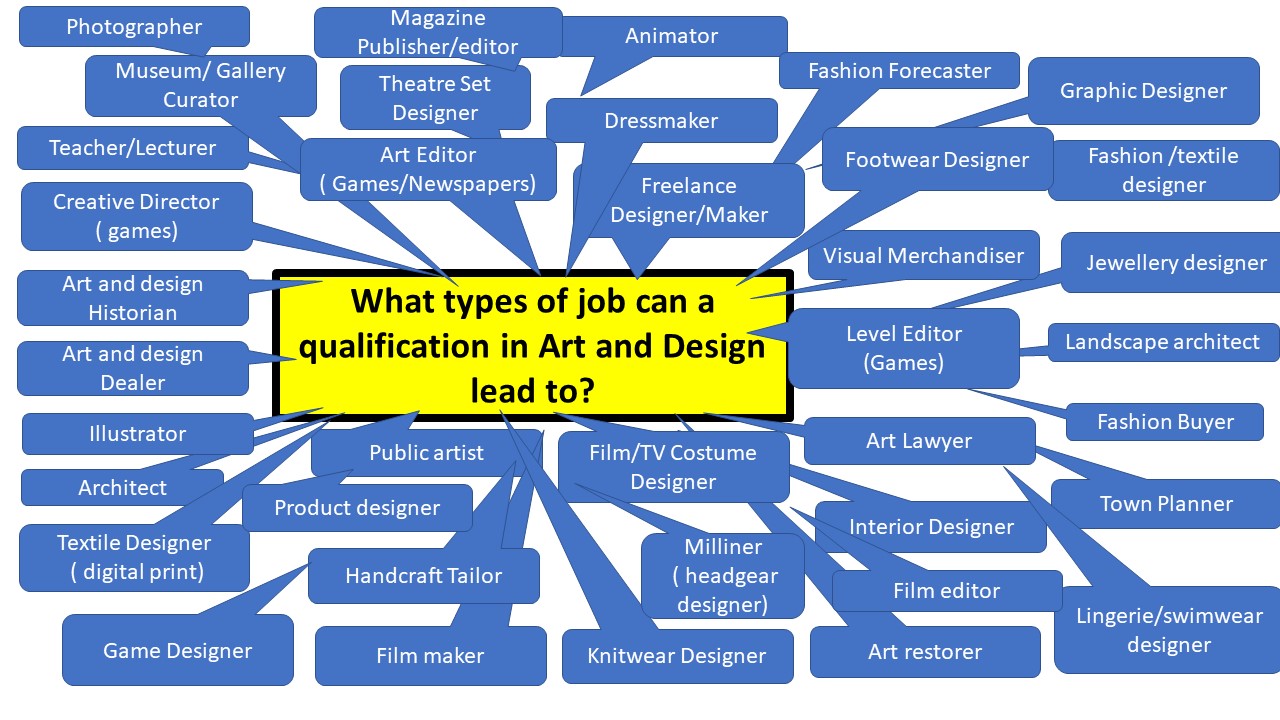
WHERE CAN YOU STUDY ART?
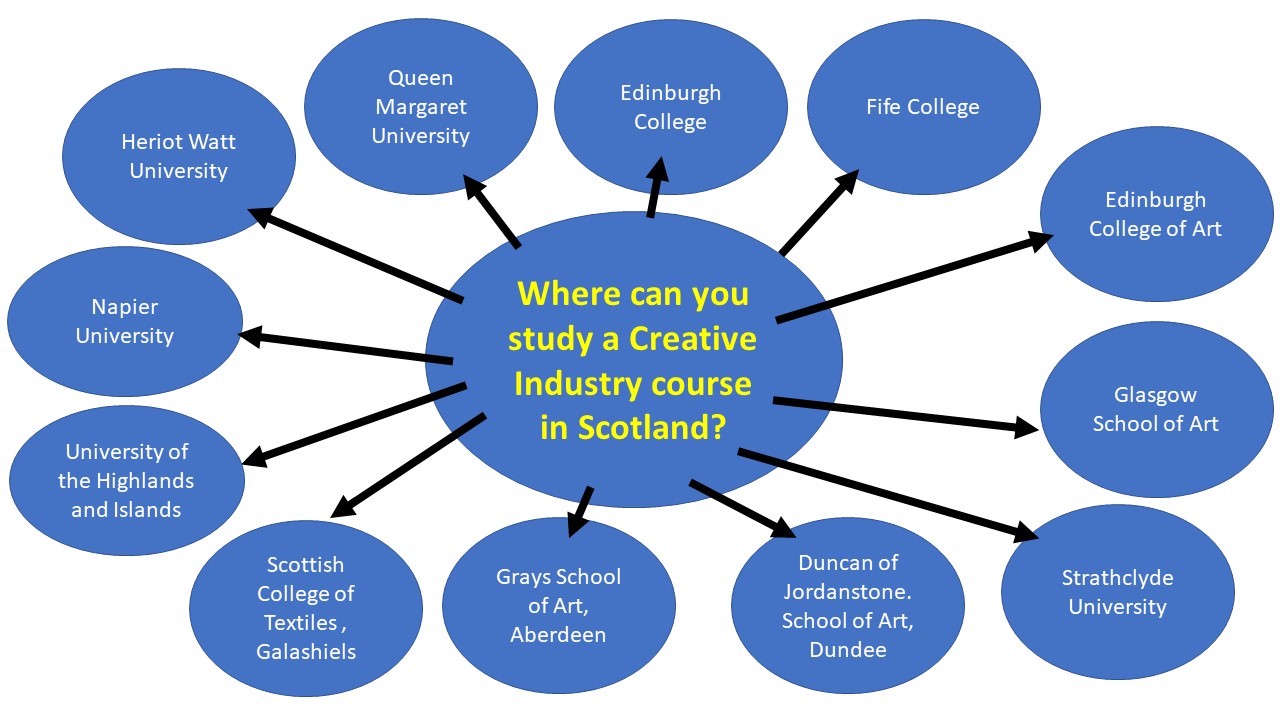

Close
Social Media